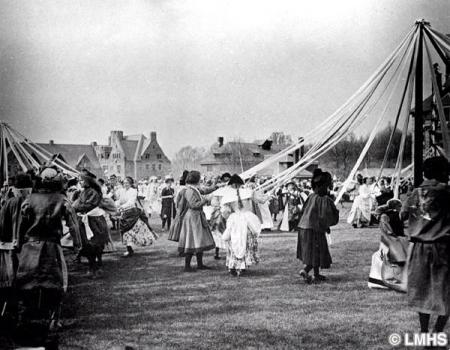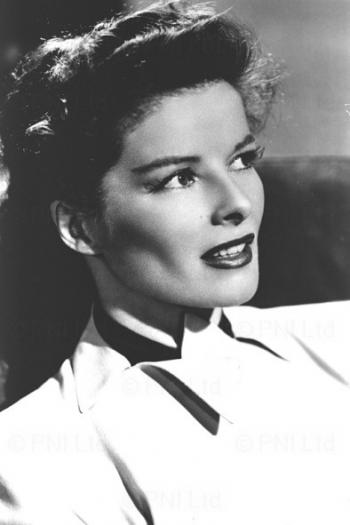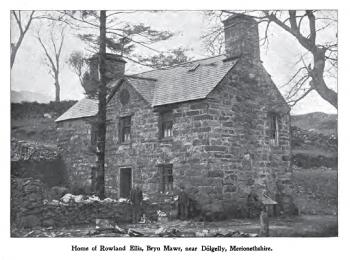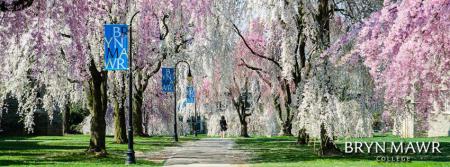Serendip is an independent site partnering with faculty at multiple colleges and universities around the world. Happy exploring!
Blogs

An Addition to the meaning of Community: Kabar
I saw the word "community" a few times in a few posts like those of Nan and Rachel, I just wanted to share this song (music and meaning of lyrics) as I feel it may add to our discussion and musings on that term.
Originally from a small island neighboring Madagascar known as Reunion, Davy Sicard sings of “Maloya Kabose” – “a gentle reminiscence of generosity and hospitality given, Sicard paints an intimate picture of the bonds which hold a community together and the culture that sustains each member.”
Lyrical Translation (French into English): “You saw light that you came closer to see, you saw that it was open and you came in, we didn’t try to find out your history, or to know who you were, we simply told you that it wasn’t that important but to come and eat a little something”
“Kabar for a talk about life as a tribute to celebrate. A Kabar where things end up, meet. A Kabar as an invitation, a message of peace submitted to the chances of paths of life for anyone who wants it, while others choose a bottle to lock up their distress or their wishes and leave their few words wander in a sea of hope until they find a sensitive and generous soul. A Kabar for last words, the very ones who do not always come at the crucial moment as they collapse under the weight of the sentence, but that sometimes arise later, without warning. A Kabar Between you and me.” (From Davy Sicards Official Site)

All the Wonders Great and Small
The Bryn Mawr College campus is a beautiful, complexly interesting place that few maps can capture every aspect of. This map I have selected is no exception. The map I have selected is located front and center of the campus center, and its border reads, "Here lies the Bryn Mawr campus, all its wonders great and small twill fold to fit your pocket or unfold to fit your wall." Well.... yes and no. This map does depict many wonders of the campus, but not all of them. Firstly, let me start off with saying this is an AMAZING map. It is beautiful, and every aspect of it is symbolic. The colors that are used to draw the map are exclusively blue, light blue, red, and green. A coincidence? I think not. This map places huge emphasis on the traditions, the people, and the buildings that make up Bryn Mawr. It gives a fun, quirky representation of Bryn Mawr that it is more than accurate in describing the amazing community and the people who make it up. However one glaring aspect that is not done justice in this representation is the fact that the equally beautiful enviornment in which the campus is set in is muted. The green of the landscape is represented, but it is flat, not only in color, but in dimension. The undulating lascape (most notably the valley separating the Pensby Center and Brecon from the rest of campus) is absent, and the many different types of trees and flowers are nowhere to be found. Not only the is the plant life underrepresented, the animal life is completely ignored.

Silence and talking
The Silenced dialogue:
As the course proceeding, I always see the word silence in noun or adjective form of silent. This time, it’s a silenced. The dialogue is somehow forced to be silent.
The article starts to talk about “The Black Issue”. It’s very interesting to author got complete different feedbacks and response from different groups of participants in the conversations. The while, or the main stream educator, insisted on pos their opinions about Black education. On the other hand, the Black participants stop disagreeing and seem to agree with their logic. They are very passionate talking about being left out from the conversation. It reminds me of many occasions when I tried to argue with my peers about Chinese history questions. I remember amot each one of us was told to don’ try to start conversation about religions, politics or other sensitive topics. Honestly, you cannot win.
May Day in its Hay Day
I choose this photo because of how it representst he past as well as the present. This is a picture of the first May Day ever held at Bryn Mawr. It was held in the year 1900. I choose it because it helps to capture the essence of Bryn Mawrs community, as a fun loving group of women that like to have a good time. During parade night I felt that same essence of the community first hand, everyone wanted to be a part of the tradition and enjoy it. One site that I have choosen to revist throughout the year is the campus green. I feel that in the photo above that huge area of open space symbolizes the freedom Bryn Mawr women have and the green on campus signifies that as well. Also since the green is currently under construction it will be an interesting this to revisit throughout the year because it will be constanly changing.
here is a link to the imgae: http://www.lowermerionhistory.org/photodb/full/164-2.jpg
I do not know why the image is not working.


Kate the Great
This image of Katharine Hepburn was the picture that I used as my visualization of the Bryn Mawr campus for my essay on Friday. It’s a photo from Hepburn’s acting days, and one that I thought could easily be associated with Bryn Mawr. Throughout my short time here, I’ve heard Hepburn, who graduated from Bryn Mawr in 1928, referred to numerous times in connection with the college. A quote of hers is on a wall in the Student Center, the Katharine Houghton Hepburn Center is named after her (and her mother), and she is one of the most famous Bryn Mawr graduates. (And the administration is awfully proud of that!). I didn’t think that this picture could possibly encapsulate all that there was to Katharine Hepburn. Even if it did, though, it also wouldn’t be able to accurately describe Bryn Mawr. Although I think that the community of Bryn Mawr makes us so special, I also think that as individuals, we are extraordinary, but only one of us can’t encompass all that there is to Bryn Mawr and its community. I have begun to associate one special tree with Bryn Mawr, though. It’s a weeping birch that we sat next to on our first outdoor class, and I’ll be sitting in it and next to it this semester.

Small Maps, Big Maps

I chose this image because I believe it represents the history of this institution, which foregrounds much more about the college than a map ever could. The Harriton House is actually located behind Schwartz, and is part of one of my longer cross-country runs. The mansion was originally constructed by Quaker Rowland Ellis, who named the land Bryn Mawr, which means “high hill” in Welsh. When the title was found in records years after Ellis had been forced to sell the property, it was decided that the township surrounding the estate would be named Bryn Mawr. Ellis’ uncle, John Humphrey, owned a handsome plot of land adjoining that of his nephew that now is Bryn Mawr College. Discovering the Harriton House on one of my runs helped me put my small window of perspective in relation to a more universal perspective of the world—in other words, my personal map in comparison to a much larger map. I use the corner between Harriton Avenue and Old Gulph Road as a reference point on my runs, while the Harriton House is a cornerstone of Bryn Mawr’s history.

Our Colorful Planet and our Limited Language
Green
OED:
I. With reference to colour.
1. Of a colour intermediate between blue and yellow in the spectrum; of the colour of grass, foliage, an emerald, etc.
Freq. with prefixed nouns or adjectives denoting a particular shade. apple, bottle-, dark, emerald-, grape-, grass-, lettuce, olive-, pea-, sea-green: see the first element. See also sense B. 4a.
a. Designating growing vegetation, grass, etc.
dictionary.com:
1. of the color of growing foliage, between yellow and blue in the spectrum: green leaves.
2. covered with herbage or foliage; verdant: green fields.
3. characterized by the presence of verdure.
4. made of green vegetables, as lettuce, spinach, endive, or chicory: a green salad.
Miriam-Webster:
1: of the color green
2a : covered by green growth or foliage <green fields>
b of winter : mild, clement
c: consisting of green plants and usually edible herbage <a green salad>
3: pleasantly alluring
4: youthful, vigorous
5: not ripened or matured <green apples>
6: fresh, new
Blue
OED:
1. a. The name of one of the colours of the spectrum; of the colour of the sky and the deep sea; cerulean.

Anthropocentric, Interdependence, Adaptation
I have chosen three words to explore: anthropocentric, interdependence, and adaptation.
Anthropocentric had definitions which highlighted different elements of the words in 3 dictionaries, the OED, Merriam Webster, and Dictionary.com. I picked out the definitions that emphasized different aspects of the word that might prove useful as we proceed with this class.
OED: Centring in man; regarding man as the central fact of the universe, to which all surrounding facts have reference.
MW: Interpreting or regarding the world in terms of human values and experiences.
Dictionary.com: Assuming human beings to be the final aim and end of the universe.
Etymonlin (Etymology): 1822, from inter- + dependence.
So these definitions show anthropocentric to be a word referring to how people view the world through a specifically human-focused lens. People whose decisions and thoughts are based on how humans fare in the world or how the environment should be tweaked and treated with specific regard to human life and convenience would be referred to as anthropocentric.
Moving on to interdependence:
A door to memory and beyond
the picture is upside down...
Solnit wrote, “No representation is complete”, no picture can fully visualize Bryn Mawr College. However, I would like to think the picture I chose - a photo of the green in front of Thomas Great Hall on Parade Night - as a door to that magical event, to my memories and to future thrilling experiences.
For so many years has Thomas Great Hall witnessed the welcoming of new students and listened to the class song the seniors sang on the senior steps… The traditions are more than memorable and enjoyable spectacles that divert me from the intensity of study. They are crucial events that help create a sense of Sisterhood among Mawters that lasts beyond the confines of the four years of college. They are the highlights of every Mawter’s Life. When I become a grandmother, I would proudly show this picture to my grandchildren and tell them about the traditions I experienced at Bryn Mawr. Right now, I like to look at the picture to “re-experience” Parade Night and keep myself amid of expectation for more exciting college experiences.



